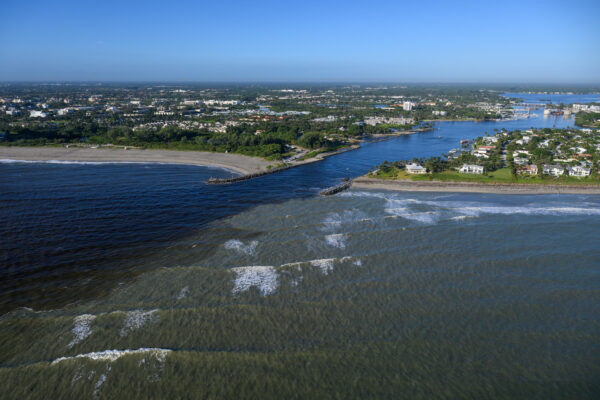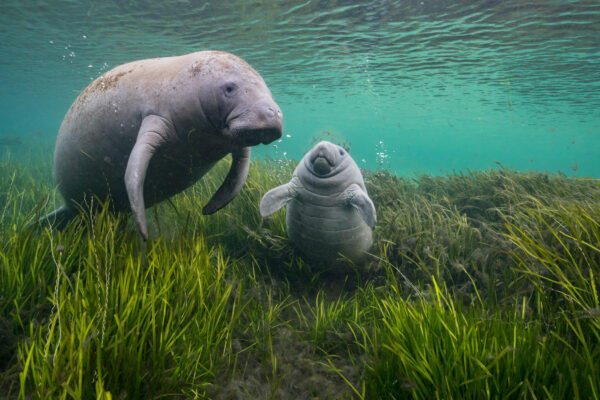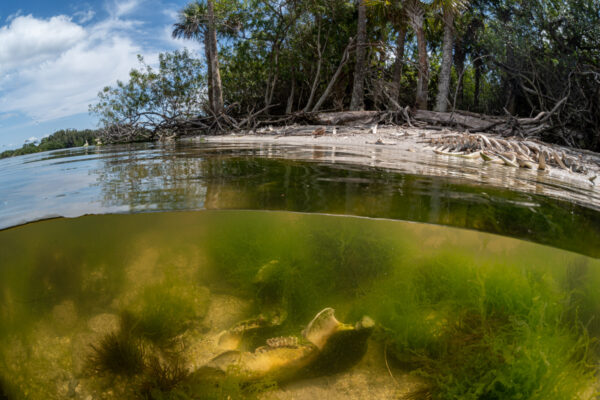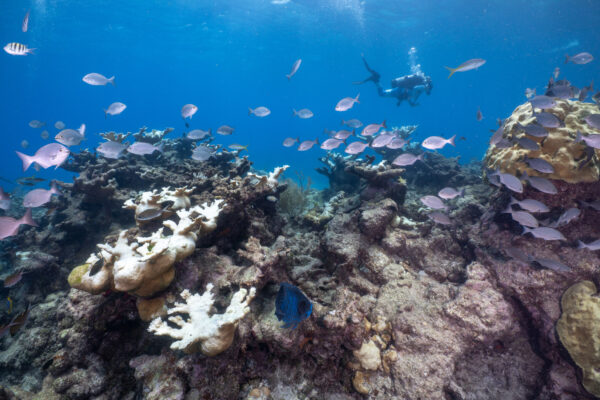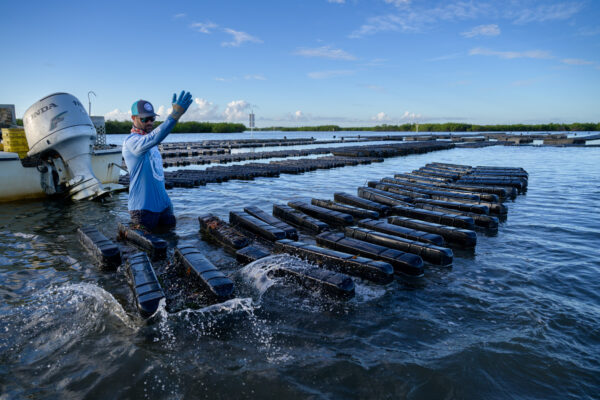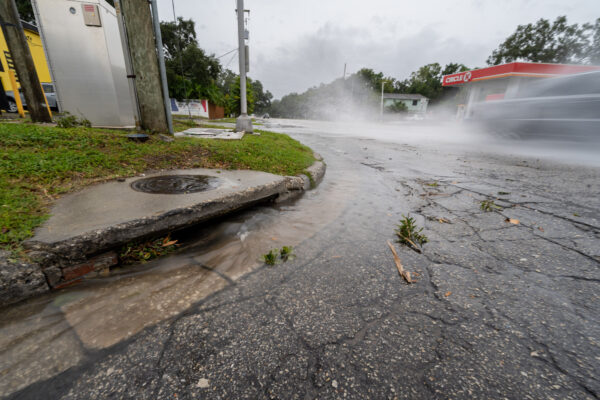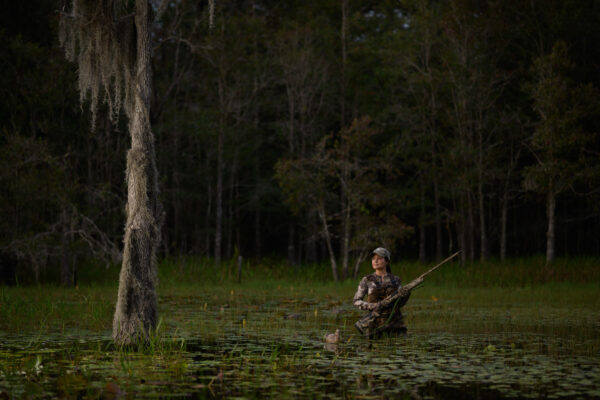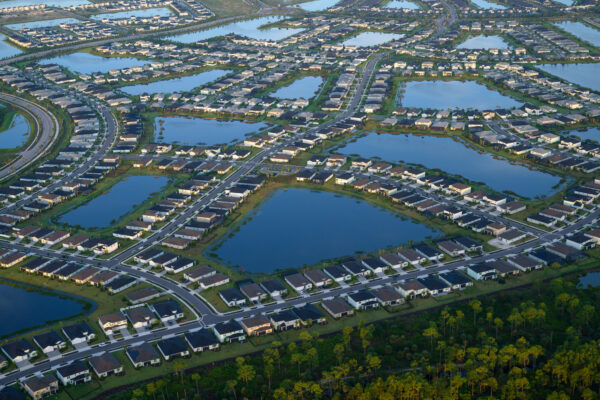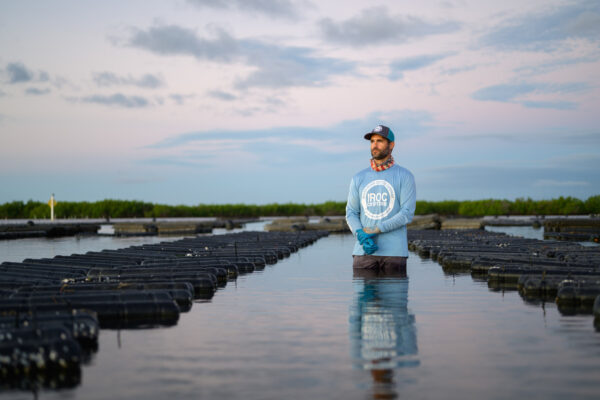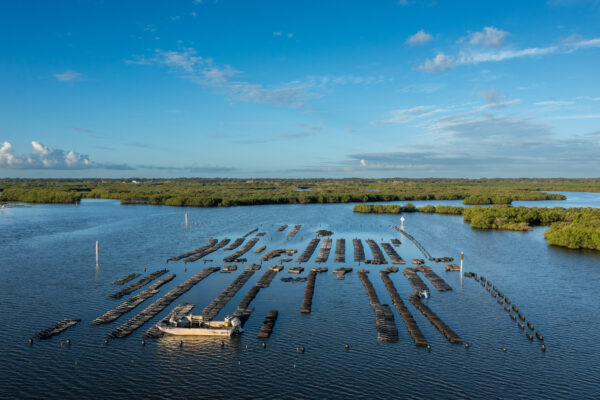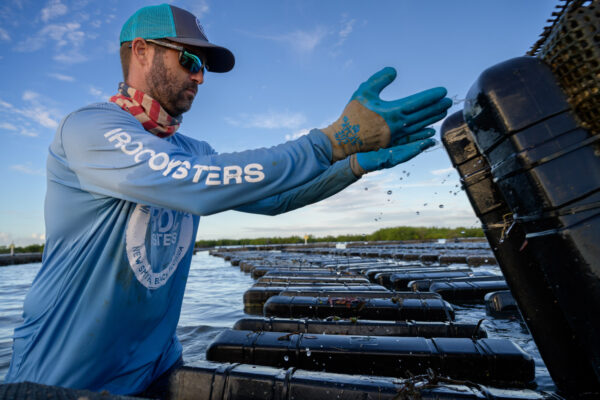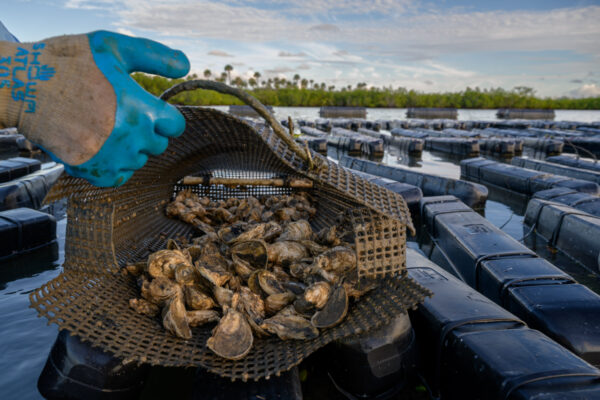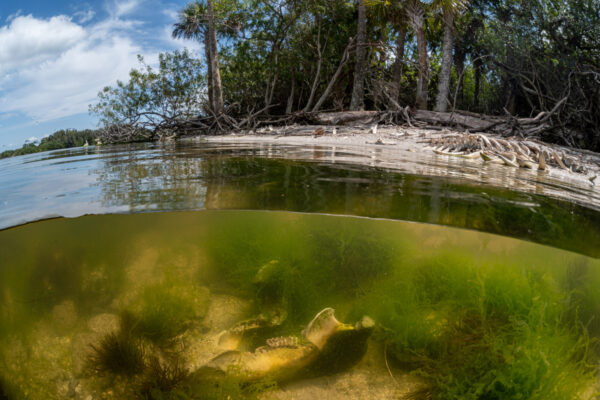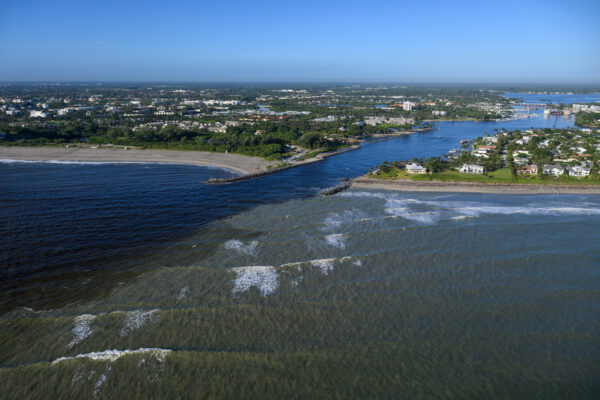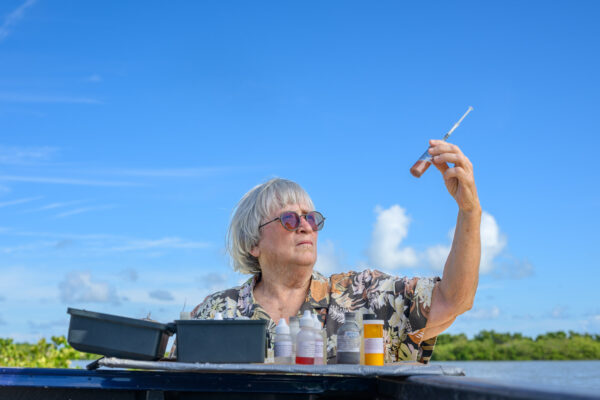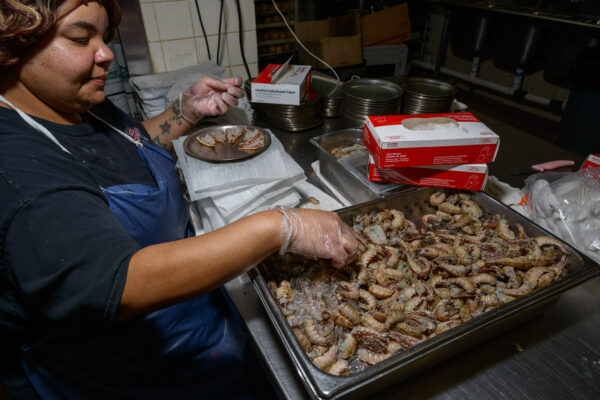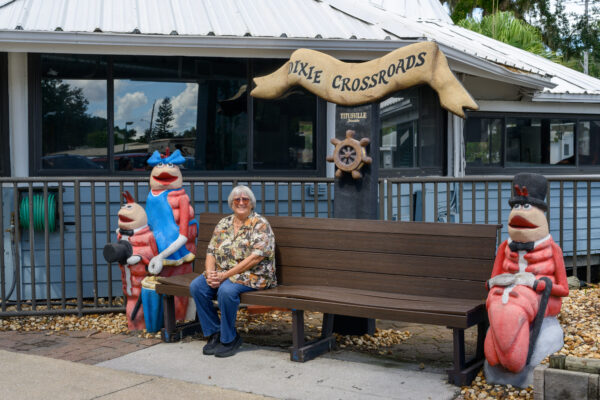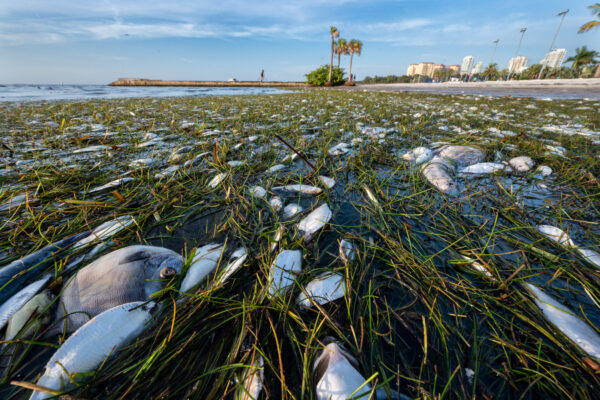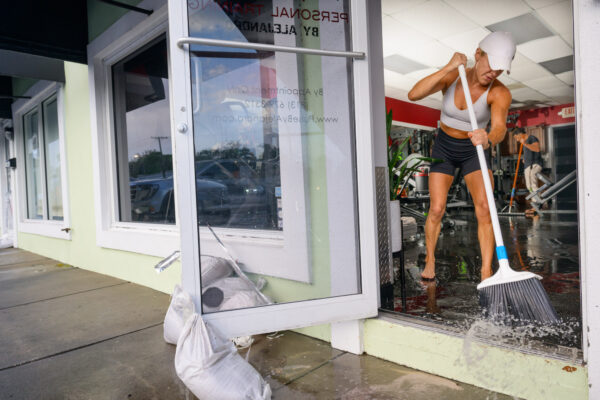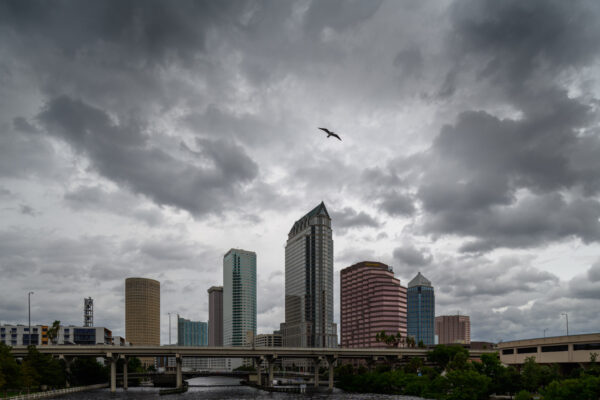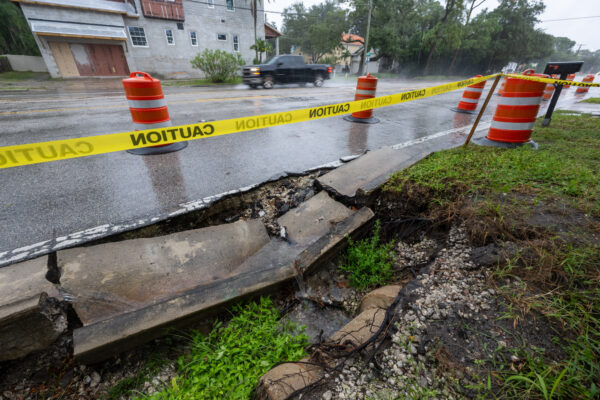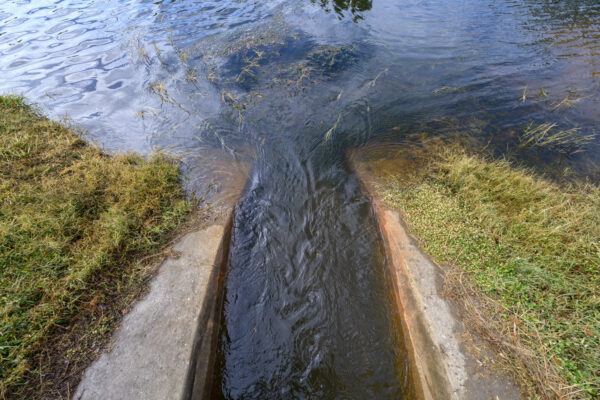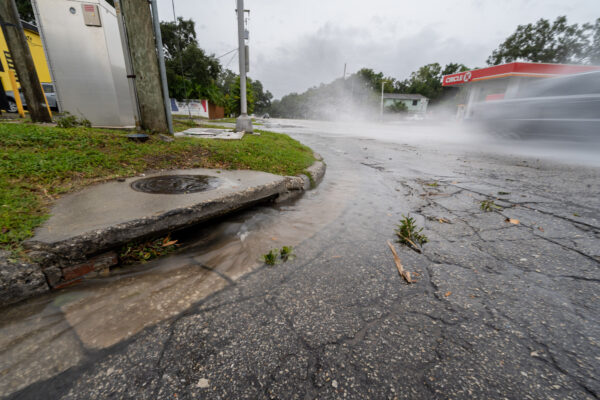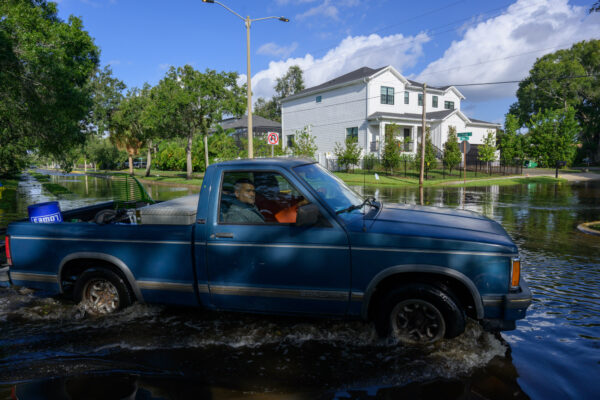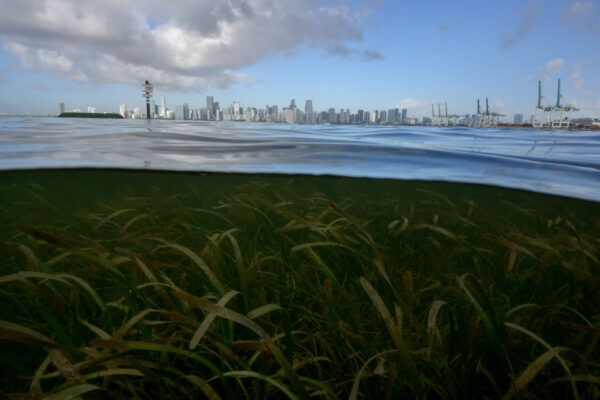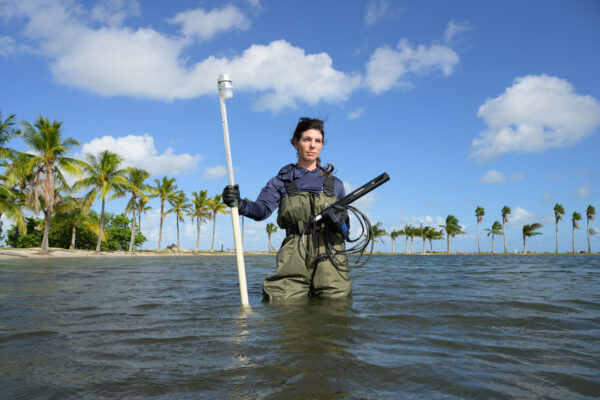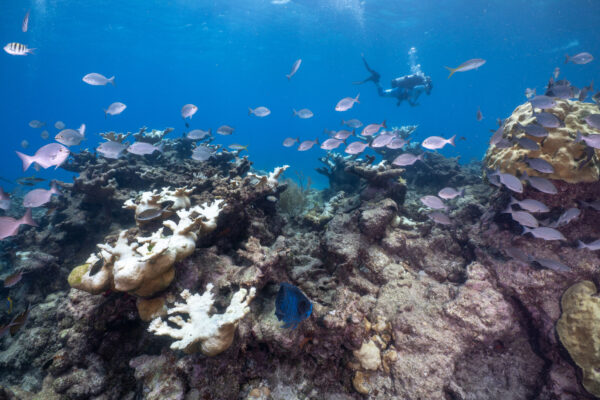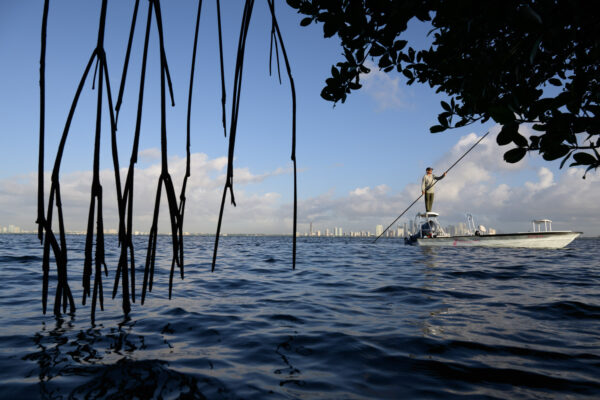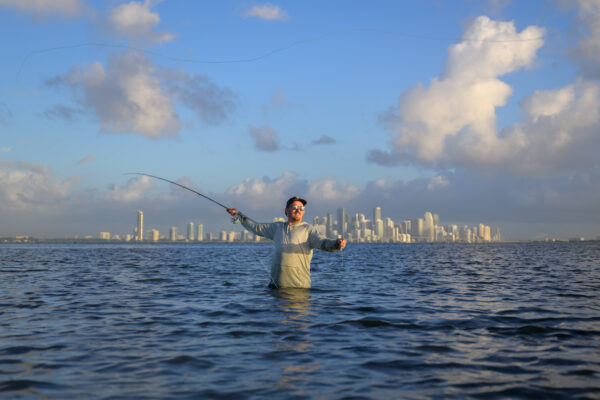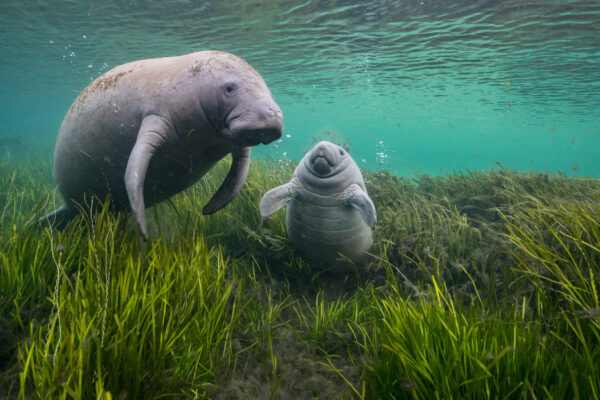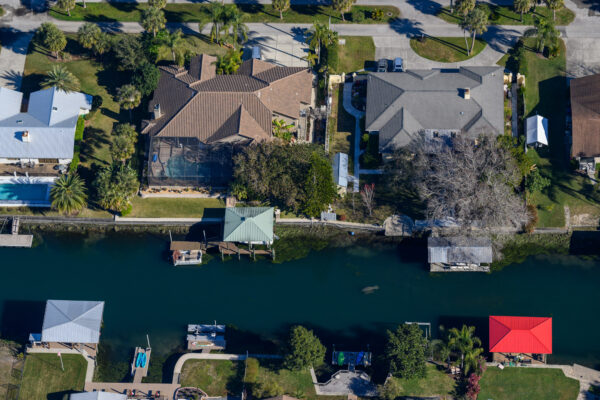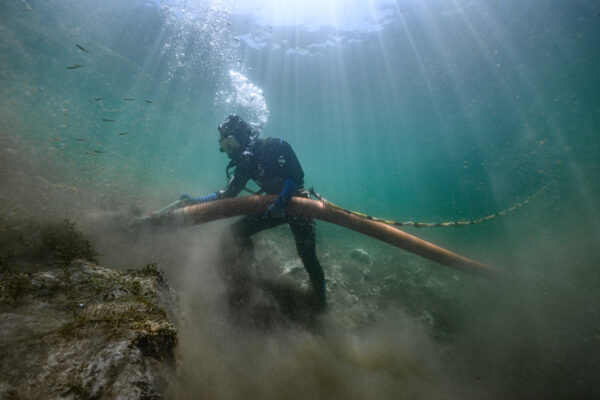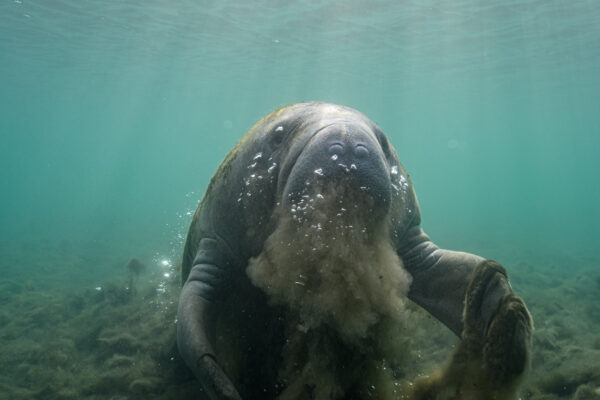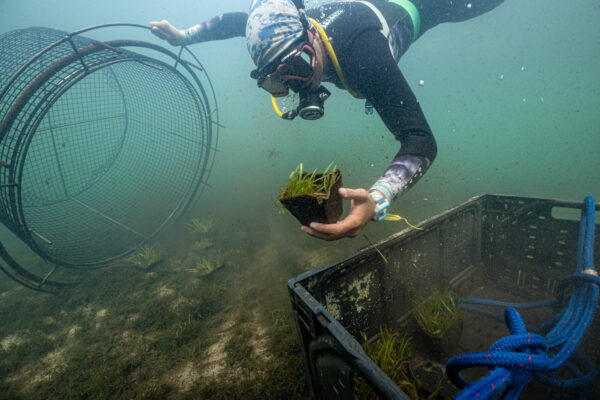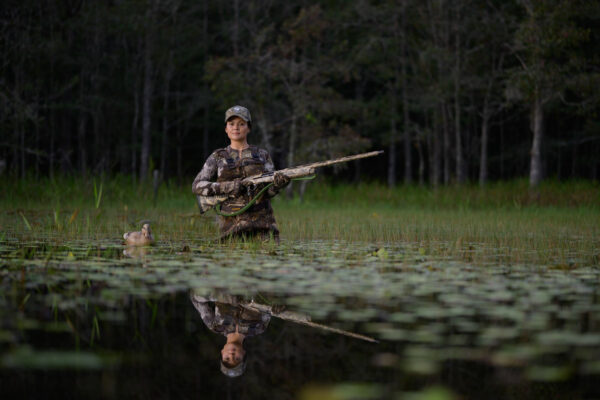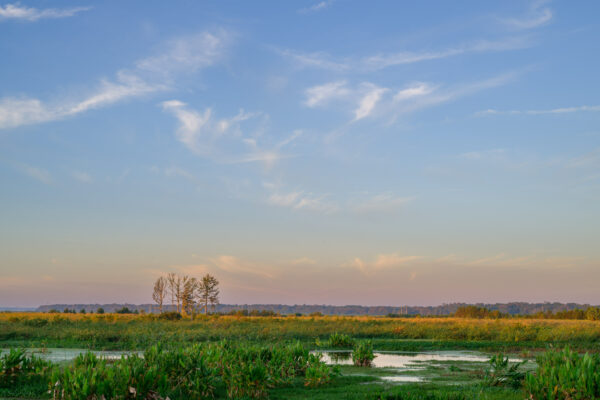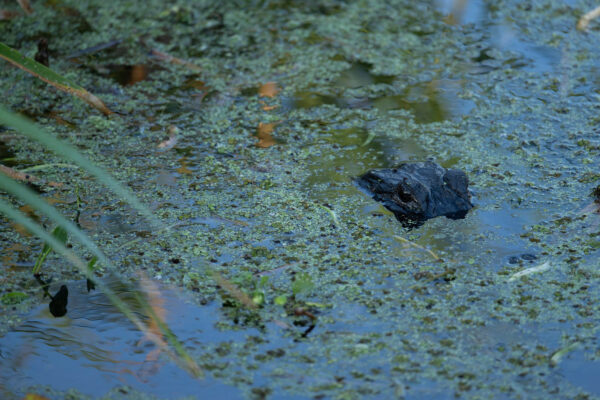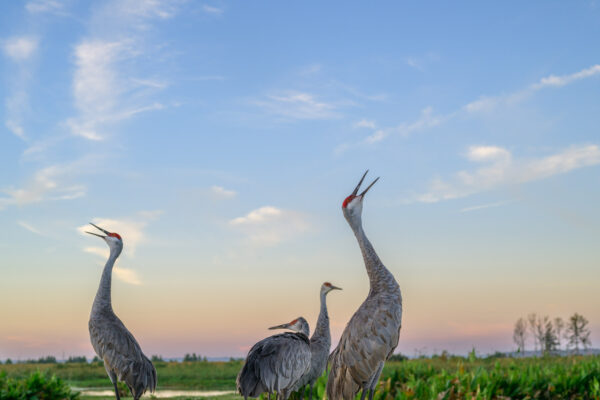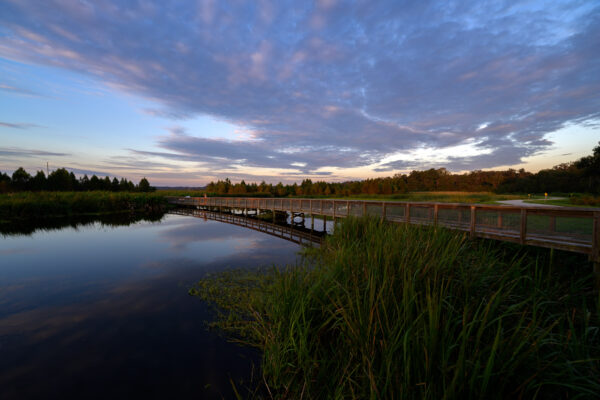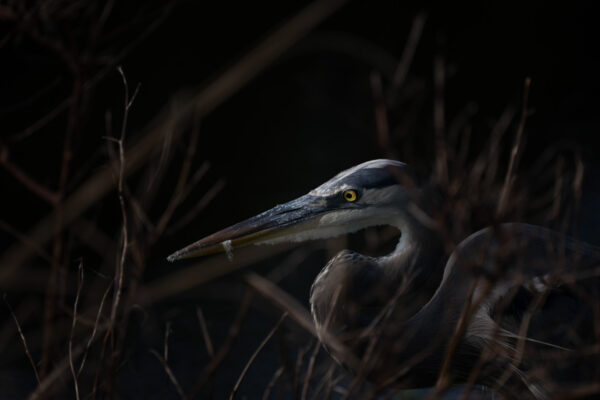A glimpse at the stormwater impacts facing Florida and new legislation passed in 2024 to help protect the state’s precious waterways
Stormwater
Media Toolkit
Legislation passed this summer by the Florida Legislature that works to combat the harmful impacts of stormwater across the state. Stormwater is a leading cause of pollution for Florida’s freshwater resources and estuaries. As it runs across yards, parking lots, roads and industrial sites, rain picks up fertilizer, litter, grass clippings, dog waste, petroleum products and other contaminants. The impacts to the state’s aquaculture and tourism industries are widespread. The Statewide Stormwater Rule (SB 7040) detailed in the Clean Waterways Act, was signed into law this June. The new rule establishes stringent minimum performance standards for stormwater treatment systems including specified nutrient reductions and a requirement that the post-development not exceed the pre-development conditions. In areas with Outstanding Florida Waters (OFW) or upstream regions, treatment requirements are increased. Specific targets for nitrogen and phosphorus reductions are set based on the condition of the receiving water body. This progress to protect Florida’s precious waterways has conservationists and fishermen alike celebrating.
Wildpath has created this digital media toolkit with stories from some of the communities most affected. Please use this toolkit and the media it contains to share this progress with your audience.
Media Requirements
Please reach out to Angela Betancourt at [email protected] with any media inquiries. Full resolution images are available for the press.
Overview: Stormwater impacts in Florida
Photos by Jason Gulley
Suggested Photo Carousel Post:
Stormwater threatens Florida’s freshwater as well as the wildlife and people who depend on it.
Photographer Jason Gulley took a look at the widespread impacts of stormwater to the state’s aquaculture, recreation and tourism industries. The good news, updates to the Clean Waterways Act passed by the Florida state legislature last year stand to enhance Florida’s water quality, support ecosystems, and protect public health.
To learn more visit wildpath.com/water
Individual Photo Captions:
Photo 1: Fresh, tannic water from the St. Lucie River pours through the Jupiter Inlet and collides with the Atlantic Ocean. Stormwater runoff from surrounding urban and agricultural areas flood the river with pollution following heavy rains.
Photo 2: A manatee and her calf graze on seagrasses that were replanted in Florida’s Crystal River as part of an ongoing restoration project. Once devoid of vegetation, grasses replanted during the restoration project have made Crystal River a year-round home for manatees and an important nursery for young manatees. Crystal River’s successful restoration provides a road map for fixing other impaired bodies of water in Florida.
Photo 3: Algae covers a manatee’s jawbone in the shallow water of Indian River Lagoon, while the bones of another manatee are bleached by the sun on a remote island shore. Nearly 2,000 manatees died in 2021 and 2022, shattering annual fatality records for the species. Deaths were concentrated in Indian River Lagoon where nutrient pollution had triggered explosions of algae that choked out the seagrasses manatees. With no food, they starved.
Photo 4: A diver swims above bleached corals on Florida’s Looe Key. While the entire reef does not appear to be bleached, it is because most of the reef was already dead from previous heat, pollution, and disease stressors before this summer’s heat wave.
Photo 5: Ryan Norris, one of the founders of the Indian River Oyster Company in New Smyrna Beach, flips floating bags of oysters at one of his Indian River Lagoon oyster farms. The bags are flipped frequently to expose oysters to air or submerge them in saltwater, which keeps the shellfish healthy and growing.
Photo 6: Runoff from a city street in Tampa, Florida flows into a storm drain during Hurricane Helene.
Photo 7: Tiffiny Sanders, an avid duck hunter, wades through a shallow wetland near Hawthorn, Florida. Duck hunting in the region has been impacted by increased pollutants and algae growth.
Photo 8: Interconnected networks of smart ponds store stormwater runoff and reduce flood risks in the Babcock Ranch development located in Charlotte County, Florida. Water stored in ponds is eventually routed through wetlands for additional treatment to reduce nutrient pollution before being returned to the environment.
Instagram tags: Photos by @jason_gulley_science
Facebook tags: Photos by @JasonGulley
Indian River Lagoon
Suggested Post:
Stormwater threatens Florida’s freshwater as well as the wildlife and people who depend on it.
Photographer Jason Gulley took a look at the widespread impacts of stormwater to the state’s aquaculture, recreation and tourism industries. The good news, updates to the Clean Waterways Act passed by the Florida state legislature last year stand to enhance Florida’s water quality, support ecosystems, and protect public health.
To learn more visit wildpath.com/water
Individual Photo Captions:
Photo 1: Ryan Norris, one of the founders of the Indian River Oyster Company in New Smyrna Beach, stands between rows of floating oyster bags in his Indian River Lagoon oyster farm.
Photo 2 and 3: Ryan Norris, one of the founders of the Indian River Oyster Company in New Smyrna Beach, flips floating bags of oysters at one of his Indian River Lagoon oyster farms. The bags are flipped frequently to expose oysters to air or submerge them in saltwater, which keeps the shellfish healthy and growing.
Photo 4: Ryan Norris, one of the founders of the Indian River Oyster Company in New Smyrna Beach, opens a bag of oysters at one of his Indian River Lagoon oyster farms.
Photo 5: Algae covers a manatee’s jawbone in the shallow water of Indian River Lagoon, while the bones of another manatee are bleached by the sun on a remote island shore. Nearly 2,000 manatees died in 2021 and 2022, shattering annual fatality records for the species. Deaths were concentrated in Indian River Lagoon where nutrient pollution had triggered explosions of algae that choked out the seagrasses manatees. With no food, they starved.
Photo 6: Fresh, tannic water from the St. Lucie River pours through the Jupiter Inlet and collides with the Atlantic Ocean. Stormwater runoff from surrounding urban and agricultural areas flood the river with pollution following heavy rains.
Photo 7: Laurilee Thompson, a fifth generation Floridian and co-owner of the famed Dixie Crossroads seafood restaurant in Titusville, Florida tests the water quality in Mosquito Lagoon.
Photo 8: Nicole Richard places rock shrimp on a metal plate in the kitchen at Dixie Crossroads, an internationally renowned seafood restaurant in Titusville, Florida. Once considered a trash shrimp that was tossed overboard, the owners of Dixie Crossroads developed increasingly sophisticated techniques to peel the rock shrimp’s thick, spiny shell. The meat has a flavor similar to lobster that has helped make the restaurant famous.
Photo 9: Laurilee Thompson, a fifth generation Floridian and co-owner of the famed Dixie Crossroads seafood restaurant in Titusville, Florida sits in front of her restaurant.
Instagram tags: Photos by @jason_gulley_science
Facebook tags: Photos by @JasonGulley
Tampa Bay
Suggested Post:
Stormwater threatens Florida’s freshwater as well as the wildlife and people who depend on it.
Photographer Jason Gulley took a look at the widespread impacts of stormwater to the state’s aquaculture, recreation and tourism industries. The good news, updates to the Clean Waterways Act passed by the Florida state legislature last year stand to enhance Florida’s water quality, support ecosystems, and protect public health.
To learn more visit wildpath.com/water
Individual Photo Captions:
Photo 1: Fish killed by red tide wash ashore near St Petersburg’s Vinoy Park, in Tampa Bay.
Photo 2: Tara Stevens cleans up after a combination of storm surge and intense rainfall during Hurricane Helene, which flooded her workplace at the Pulse Personal Training gym in Tampa, Florida. The gym and neighboring businesses on South Manhattan Avenue regularly flood during high intensity rainfall events because the stormwater drainage system in this part of the city is old and undersized.
Photo 3: A storm band from Hurricane Helene passes over downtown Tampa, Florida on September 26, 2024.
Photo 4: Stormwater pours into a sinkhole in the front yard of a homeowner near the intersection of South Manhattan Avenue and West Sevilia Street in Tampa, Florida during Hurricane Helene. Streets, homes, and businesses along this stretch of South Manhattan Avenue flood during high intensity rainfall events because the stormwater drainage system in this part of the city is old and undersized.
Photo 5: Stormwater flows from a retention pond into a culvert in Tampa, Florida during Hurricane Helene.
Photo 6: Runoff from a city street in Tampa, Florida flows into a storm drain during Hurricane Helene.
Photo 7: A truck navigates the flooded intersection of El Prado Blvd. and South Omar Ave. in Tampa, Florida on the day after heavy rainfall and storm surge from Hurricane Helene flooded south Tampa.
Instagram tags: Photos by @jason_gulley_science
Facebook tags: Photos by @JasonGulley
South Florida
Suggested Post:
Stormwater threatens Florida’s freshwater as well as the wildlife and people who depend on it.
Photographer Jason Gulley took a look at the widespread impacts of stormwater to the state’s aquaculture, recreation and tourism industries. The good news, updates to the Clean Waterways Act passed by the Florida state legislature last year stand to enhance Florida’s water quality, support ecosystems, and protect public health.
To learn more visit wildpath.com/water
Individual Photo Captions:
Photo 1: Seagrass grows in the clear, shallow water surrounding the City of Miami.
Photo 2: Miami Waterkeeper Rachel Silverstein, PhD, poses with water testing equipment in the public swimming area at Matheson Hammock Park in Miami, Florida. Miami Waterkeeper samples the park weekly.
Photo 3: A diver swims above bleached corals on Florida’s Looe Key. While the entire reef does not appear to be bleached, it is because most of the reef was already dead from previous heat, pollution, and disease stressors before this summer’s heat wave.
Photo 4: Framed by mangrove roots, artist and fly fisherman Magnus Sodamin poles his boat over shallow seagrass beds between Virginia Key and the City of Miami.
Photo 5: Artist and fly fisherman Magnus Sodamin fishes the seagrass beds around Miami several times per week.
Instagram tags: Photos by @jason_gulley_science
Facebook tags: Photos by @JasonGulley
Crystal River
Suggested Post:
Stormwater threatens Florida’s freshwater as well as the wildlife and people who depend on it.
Photographer Jason Gulley took a look at the widespread impacts of stormwater to the state’s aquaculture, recreation and tourism industries. The good news, updates to the Clean Waterways Act passed by the Florida state legislature last year stand to enhance Florida’s water quality, support ecosystems, and protect public health.
To learn more visit wildpath.com/water
Individual Photo Captions:
Photo 1: A manatee and her calf graze in seagrasses that were replanted in Florida’s Crystal River as part of an ongoing restoration project. Once devoid of vegetation, grasses replanted during the restoration project have made Crystal River a year-round home for manatees and an important nursery for young manatees. Crystal River’s successful restoration provides a road map for fixing other impaired water bodies in Florida.
Photo 2: A manatee and her calf swim through a network of canals in Florida’s Crystal River. Development has encroached on manatee habitat and flooded waterways with excess nutrients from sewage and lawn fertilizer. After nutrient pollution caused Crystal River’s aquatic ecosystem to collapse, the town banded together to fix their water.
Photo 3: A diver from an aquatic restoration company, Sea and Shoreline, dredges thick layers of organic muck from the bottom of Crystal River, Florida. This muck must be removed so that eelgrass, an important manatee food source, can be planted in firmer substrate below. Early attempts to replant eelgrass in muck were unsuccessful because manatees would pull the roots out of the muck while grazing. Planting in firmer substrate below the muck allows roots to become deeply established, and manatees eat only the blades of grass.
Photo 4: Algae blanketing the bottom of the spring-fed Crystal River clings to a manatee surfacing for air. Approximately 70 springs discharge fresh and brackish groundwater into Kings Bay, creating a shallow estuary that supports a unique blend of freshwater and ocean species. Seventy years ago, Crystal River and Kings Bay were famous for exceptional water quality and clarity and waving stands of eelgrass. Today, visibility in many parts of a river that was once so clear it was named “crystal” now rarely exceeds 10 feet and algae, not eelgrass, cover the river bottom. Water managers indicate the declining health of Kings Bay is due to the combined effects of development, dredging of canals for waterfront houses and boat docks, seawall construction, groundwater extraction, pollution and sea level rise.
Photo 5: A diver from Sea and Shoreline replants seagrasses in Florida’s Homosassa River as part of a massive restoration project. The grasses are planted inside exclusion cages which allow grasses to develop mature root systems before manatees eat it.
Instagram tags: Photos by @jason_gulley_science
Facebook tags: Photos by @JasonGulley
Central Florida
Suggested Post:
Stormwater threatens Florida’s freshwater as well as the wildlife and people who depend on it.
Photographer Jason Gulley took a look at the widespread impacts of stormwater to the state’s aquaculture, recreation and tourism industries. The good news, updates to the Clean Waterways Act passed by the Florida state legislature last year stand to enhance Florida’s water quality, support ecosystems, and protect public health.
To learn more visit wildpath.com/water
Individual Photo Captions:
Photo 1: Tiffiny Sanders, an avid duck hunter, wades through a shallow wetland near Hawthorn, Florida. Duck hunting in the region has been impacted by increased pollutants and algae growth.
Photo 2: The 264 acre Sweetwater Wetlands Park in Gainesville, Florida is a popular spot for birding and wildlife viewing, but was built to store and treat stormwater runoff. Prior to the park’s construction, stormwater, oil, fertilizers and other pollutants carried with it from Gainesville, flowed into a sinkhole that recharges the Florida aquifer. Constructed between 2012 and 2014, the system of connected wetlands now naturally treats and filters water before it recharges the aquifer.
Photo 3: An alligator navigates the Sweetwater Wetlands Park in Gainesville, Florida. The 264-acre park is popular for walking, running, birding and wildlife viewing but it was originally built to address pollution from stormwater runoff. Prior to the park’s construction, stormwater runoff from Gainesville, along with oil, fertilizer and other pollutants carried with it, flowed into a sinkhole that recharges the Florida aquifer. Constructed between 2012 and 2014, the system of connected wetlands now naturally treats and filters runoff before recharging the aquifer.
Photo 4: A quartet of Sandhill Cranes call loudly at sunrise in the Sweetwater Wetlands Park in Gainesville, Florida. The 264-acre park is popular for walking, running, birding and wildlife viewing but it was originally built to address pollution from stormwater runoff. Prior to the park’s construction, stormwater runoff from Gainesville, along with oil, fertilizer and other pollutants carried with it, flowed into a sinkhole that recharges the Florida aquifer. Constructed between 2012 and 2014, the system of connected wetlands now naturally treats and filters runoff before recharging the aquifer.
Photo 5: The 264 acre Sweetwater Wetlands Park in Gainesville, Florida is popular for walking, running, birding and wildlife viewing but was originally built to address pollution from stormwater runoff. Prior to the park’s completion in 2014, stormwater, and the oil, fertilizer and other pollutants carried with it from Gainesville, flowed into a sinkhole that recharges the Florida aquifer. The wetlands now naturally treat and filters runoff before it recharges the aquifer.
Photo 6: A Great Blue Heron rests along the shore of a wetland in the Sweetwater Wetlands Park in Gainesville, Florida. The 264-acre park is popular for walking, running, birding and wildlife viewing but it was originally built to address pollution from stormwater runoff. Prior to the park’s construction, stormwater runoff from Gainesville, and the oil, fertilizer and other pollutants carried with it, flowed into a sinkhole that recharges the Florida aquifer. Constructed between 2012 and 2014, the system of connected wetlands now naturally treats and filters runoff before recharging the aquifer.
Instagram tags: Photos by @jason_gulley_science
Facebook tags: Photos by @JasonGulley
Suggested Hashtags
#florida #floridawater #floridastormwater
Usage Rights
Visuals by Jason Gulley provided for one-time use for coverage or promotion of Florida’s water quality, dated November 2024. Copying, sub-licensing, sale, distribution, and archiving are prohibited.
Mandatory Social Media Usage Requirements
For images, include the photo credit tag as listed:
- Instagram: Photo by @jason_gulley_science
- Facebook: Photo by @JasonGulley
- X: Photo by Jason Gulley
Mandatory Online/Print Usage Requirements for Multimedia
Include photo credit to Jason Gulley.
Mandatory On-Air Usage Requirements for Multimedia
For on-air usage, include credit to Jason Gulley with photo(s) used.
This media kit was made possible with generous support from Common Pictures LLC.
About Common Pictures LLC
Common Pictures amplifies stories that humanize, inspire and heal our broken world. We aim to spark the moral imagination by understanding the world as it is and pausing to consider how it might be. The impact media projects we create and support affirm social justice, environmental stewardship and the dignity of our shared humanity. They dismiss polarization, motivate audiences with hope, and instigate restorative work.
This photo essay was produced by Tori Linder with support from Lauren Yoho and Malia Byrtus. Photographs are by Jason Gulley.


